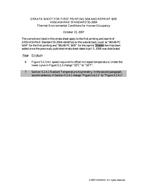In order to achieve nearly net zero energy use, both new and energy refurbished existing buildings will in the future need to be still more efficient and optimized. Since such buildings can be expected to be already well insulated, airtight, and have heat recovery systems installed, one of the next focal points to limiting energy consumption for thermally conditioning the indoor environment will be to possibly reducing the ventilation rate, or making it in a new way demand controlled. However, this must be done such that it does not have adverse effects on indoor air quality (IAQ).Annex 68, Indoor Air Quality Design and Control in Low Energy Residential Buildings, is a project under IEA’s Energy Conservation in Buildings and Communities Program (EBC), which will endeavor to investigate how future residential buildings are able to have very high energy performance whilst providing comfortable and healthy indoor environments. New paradigms for demand control of ventilation will be investigated, which consider the pollution loads and occupancy in buildings. As well, the thermal and moisture conditions of such advanced building shall be considered because of interactions between the hygrothermal parameters, the chemical conditions, ventilation and the wellbeing of occupants.The project is divided into the five subtasks: 1. Defining the metrics. 2. Pollutant loads in residential buildings. 3. Modeling. 4. Strategies for design and control of buildings. 5. Field measurements and case studies. A flagship outcome of the project will be a guidebook on design and operation of ventilation in residential buildings to achieve high IAQ with least possible energy consumption. The paper illustrates the working program of each of these activities.
Citation: ASHRAE and AIVC IAQ 2016 Conf
Product Details
- Published:
- 2016
- Number of Pages:
- 8
- Units of Measure:
- Dual
- File Size:
- 1 file , 2.2 MB
- Product Code(s):
- D-2016IAQ-23

